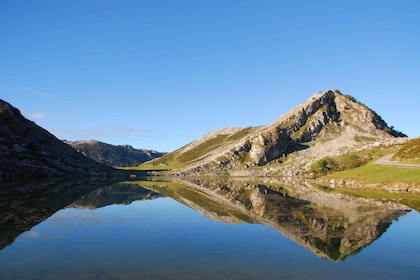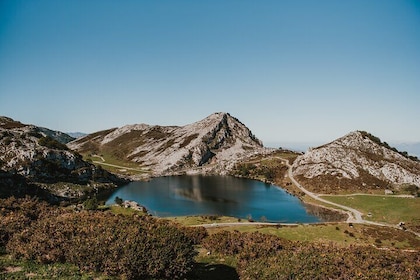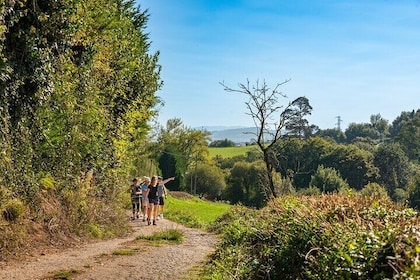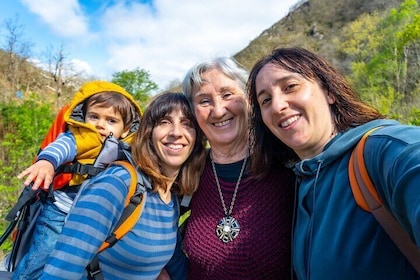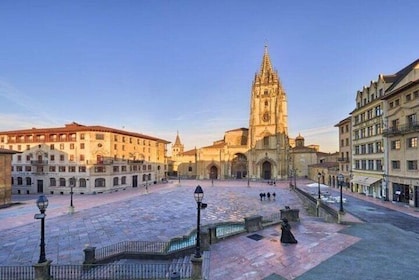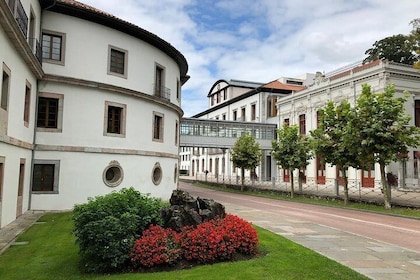A visit to San Julián de los Prados may include attending a Mass, but it could also be a lesson in art appreciation as the building itself is considered a work of art and has been deemed a historic-artistic monument as well as an UNESCO site. Come here to learn about Oviedo’s history and the outside influences that shape the city today.
San Julián de los Prados dates back to the reign of Alfonso II the Chaste, which means it was built between A.D. 812 and 842. Notice the pre-Romanesque style and the distinctive medieval paintings. The church was originally dedicated to a married pair of Christian martyrs, Julián and Basilissa. It was donated to the city of Oviedo in A.D. 896 by Alfonso III the Great.
When you first arrive, view the church from the outside by walking around in the grass out front or sitting on a bench on the side. See how the exterior is symmetrical, with each side drawing your eye into the gate at the entrance. Notice the bells and small cross at the top.
Walk in and you will find yourself surrounded by beautiful murals. Take note of the geometric shapes and figures painted in a wide range of colors. Art historians and the people of Oviedo have ensured this artwork is preserved, as it is derived from Roman motifs and represents influences in Oviedo’s past.
Stand in the central chapel and look up. There, a closed room with access from the outside sits with its three brick arches and two marble columns.
Visit San Julián de los Prados at any time of year. It is open to tourists from Monday to Saturday. Plan to come in the morning or in the evening, as it often closes during the afternoon. Entry requires a small fee, with significant discounts for children and groups. Free admission for all is offered on the first Monday of the month. Be sure to book a guided tour from a local expert in advance if you want to learn about the church in greater detail.




